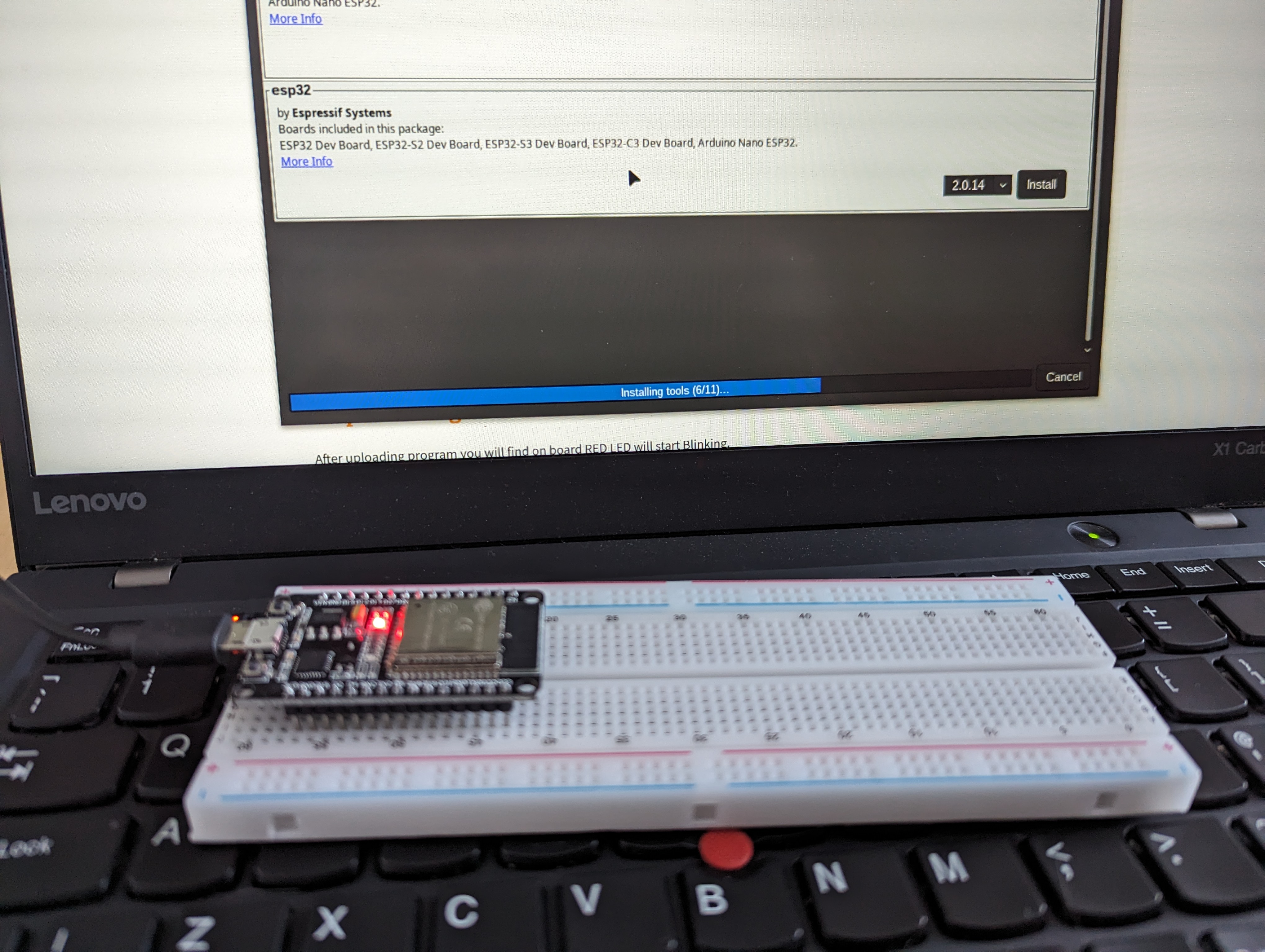I decided that a single board computer such as a Raspberry Pi (even the Nano models) was overkill for the job of driving a couple of motors and playing an MP3, so for the first time in a while I’m back playing with microcontrollers. In this case I decided to try out the ESP32.
This was my first time playing with ESP32 boards, so I decided to use the Arduino IDE to program it.
As well as installing the IDE itself, I needed pyserial installed (which was not installed by default), and I needed to add myself to the correct group for accessing serial devices.
On Debian/Ubuntu that looks like:
sudo apt install arduino python3-serial
sudo useradd -aG dialout $USER
On Arch/Manjaro:
sudo pamac install arduino python-pyserial
sudo useradd -aG uucp $USER
(Instructions for other distros may vary, so check them out if you’re using something else. There’s plenty of instructions out there for Windows and Mac too.)
Within the Arduino IDE, I had to set up an Additional Board Manager URL, then open the Board Manager and install the esp32 data, following instructions here.

After selecting the board and the serial port, I flashed a quick demo program to toggle the on-board LED and prove the device was working:
#define LED 2
void setup() {
pinMode(LED,OUTPUT);
}
void loop() {
delay(500);
digitalWrite(LED,HIGH);
delay(500);
digitalWrite(LED,LOW);
}
So far, so good. The next job I attempted was getting control over the fish’s motors so I could start flapping it around.
Add a Comment